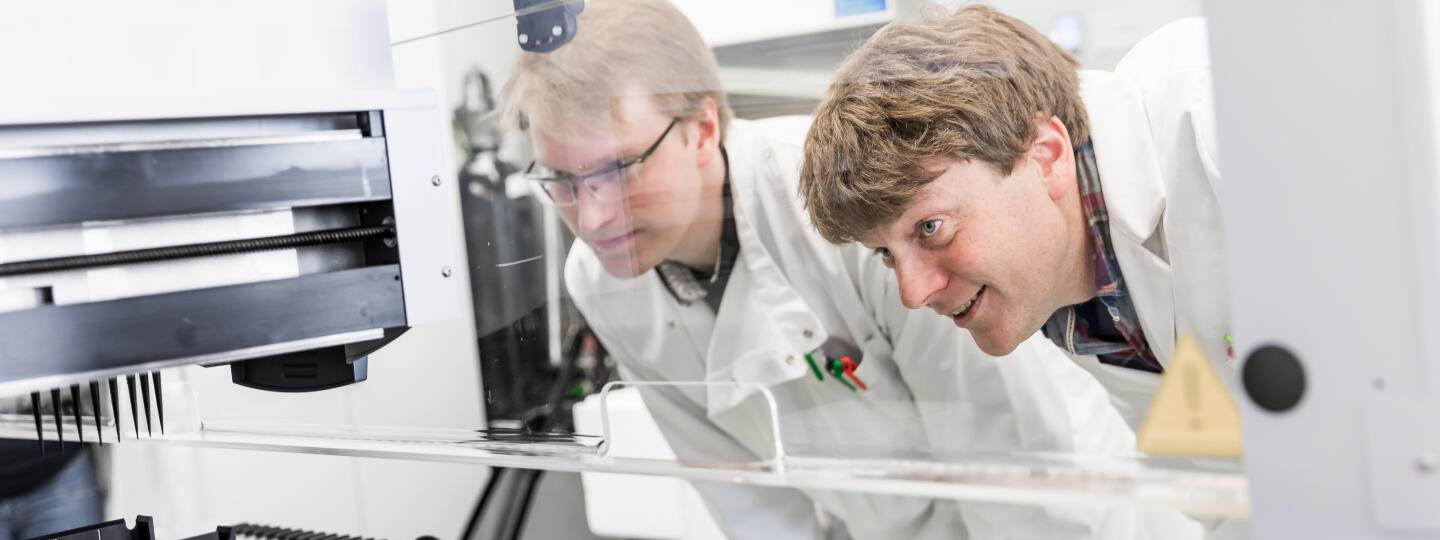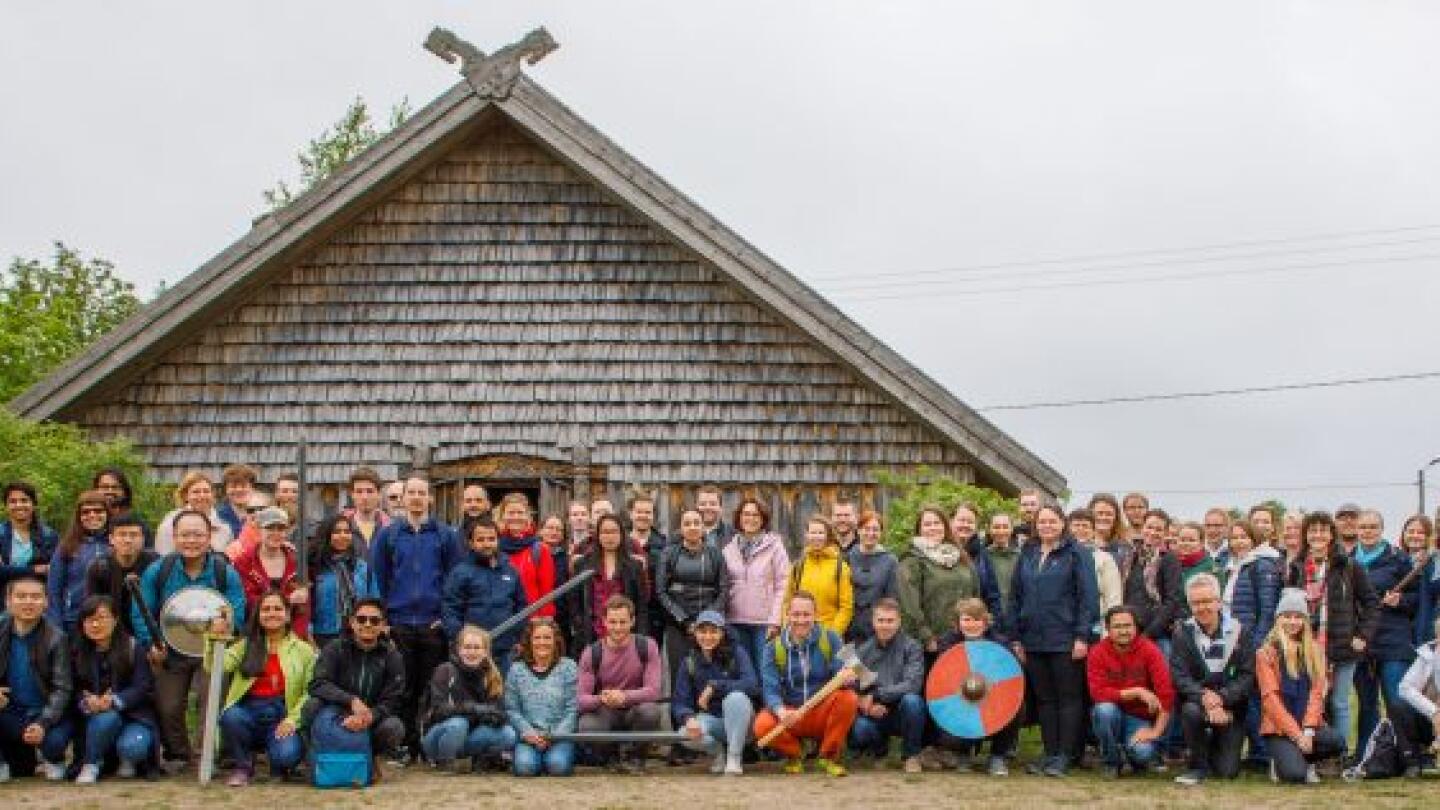Among all the branches of life sciences, cell and molecular biology have often relied upon the development of key enabling technologies. Several significant paradigm shifts in biosciences have their origins specifically in novel and innovative technologies and/or methods.
The writer is Director of Turku Bioscience John Eriksson.
Different types of advanced microscopes and other imaging instruments, protein characterisation and sequencing instruments, as well as equipment and methods to investigate the genome and the mechanisms of gene transcription are all good examples of groundbreaking technologies that have, subsequently, resulted in a multitude of discoveries. These technologies helped to define, for example, the cell theory, the detailed structure and functional principles of cells, the basics of protein functions, DNA as the carrier of genetic information, and how genomic information is maintained, copied, and translated into meaningful messages and structures. Numerous Nobel Prizes have later brought fame to the scientists who have discovered these structures, principles, and mechanisms, not to mention that countless current medical top innovations, drugs, and therapies are based on these findings.
In the early days of modern science, research equipment and technologies could only be accessed by the chosen few among all researchers. Accessing any advanced research instruments and to get the required competence to employ a given technology required approval and agreement usually with an individual professor and their research group. The actual use then often required a close relationship or at least collaborative arrangements with the involved “gatekeepers” of the technologies. The situation as such lasted surprisingly long, and there are still research environments where this type of restricted instrument and technology access remains the dominant practice.
Even if such private arrangements might work well in special cases and even produce good results, in terms of sensible access and utilisation rate of the equipment, this type of highly restricted research infrastructure access is a very inefficient way to manage expensive and intricate research equipment. The aspect of efficient use is becoming increasingly important as research equipment has been getting progressively more expensive and also highly intricate during the past decades. The prices of equipment purchases are often around hundreds of thousands, even millions of euros. Such research instruments do not belong to individual researchers, as the utilisation and general benefit of the instrument are considerably better if everyone gets to use the equipment. As a rule, the more extensively used the research instruments are, the better the gain and the return on investment.
Advanced research technology services that are provided equally to all researchers need support personnel that master the given special instruments. Thus, this type of equipment needs to be situated in joint infrastructure centres that have the necessary competence and expertise to maintain the instruments, provide services, and advice the users. Such centres usually function on the so-called open access principle, which means that all researchers have the right to use and access the instruments. Open access centres provide services regardless of where the user comes from.
When the top research instruments are centralised to technology centres that operate on the open access principle, the efficiency and productivity of instrument use, as well as the reproducibility of the obtained data will all improve significantly. With this operational model, research administration as well as strategies and management, especially in relation to research infrastructures, are changing rapidly. Instead of being mere service providers, international technology centres are becoming pioneering and strategically led powerhouses of science and key resources of collaborative and open research operating at the frontiers of science. With this development, the members at all levels of the scientific community are able to reach increasingly higher and, hopefully, the chances of pulling off groundbreaking and pioneering discoveries are also increasing.
Due to this development, end-users, institutions, equipment developers, funders, and ministries of science in different countries more widely recognise the value and importance of the open access principle, and how essential it is to implement this principle upon the acquisition of world-class instruments. Instruments run with the open access principle produce significant savings in equipment operating costs and a considerably better profit and benefit from taxpayers or charity-funded investments. Efficiency is gained also because overlap and redundancy can be avoided.
Science administrations in many countries have also noticed that open access centres have the potential to significantly stimulate innovation and tech transfer by providing optimal access to resources, techniques, information, and competence exactly where these resources are most acutely needed, i.e. in the region between a basic science discovery and the actual commercialisation of a given innovation. In this way, collaborative companionships with industry and technology transfer are boosted and improved. Already in its previous framework programmes, the European Union has introduced open access as a central theme in the context of research infrastructures. The EU has also extended the concept of open access to open science, the goal of which is to transform research into a more collaboration-oriented, global, and creative activity, and bring research closer to society by opening science with the help of digital tools, networks, and media.
Turku Bioscience – Internationally Significant Cluster of Expertise
It was a broadminded and avant-garde action when the University of Turku and Åbo Akademi University signed an agreement as early as 1989 to establish a joint bioscience centre with the prime task of providing technology services and also with a focus on high-end research in molecular and cellular biosciences. The original name of the Centre was Turku Centre for Biotechnology, but to celebrate the Centre’s 30th anniversary this year, it was decided that the name would be changed to Turku Bioscience Centre to emphasise the Centre’s mission to serve a broad community of bioscientists and to strengthen the profiling of the Centre. With the name change published in the spring, the brand name is Turku Bioscience, the Finnish name Turun biotiedekeskus and the Swedish name Åbo biovetenskapscentrum.
Over the years, Turku Bioscience has become a significant player in the biosciences of the region enabling top research and advancing the technology services for innovations, tech transfer, and biomedical industry. Over 200 researchers work at Turku Bioscience, and there are over a dozen research groups. Each year, the Centre mobilises 4–6 million in external funding and, over the years, the accumulated value of the machine park has become in the order of tens of millions.
The personnel of Turku Bioscience in triumphant moods wearing Viking gear. Part of researchers of Turku Bioscience on a spring trip at the Rosala Viking Centre in May this year.
From the start, Turku Bioscience has specialised in producing top technology services for researchers locally, nationally, and internationally. The Centre offers world-class research infrastructure, expert personnel to guide the best use of equipment, and top researchers whose expertise can be employed in gaining maximum benefit from different technologies and applications. As the Centre has operated on the open access principle already for quite some time, it has been a pioneer as a general provider of bioscience technology services in Finland in many ways.
Throughout its existence, Turku Bioscience has functioned at the core of the technology services on the Turku biocampus and participated in many of the most central development projects in the Turku region and Southwest Finland. In addition, the publication profile of the research groups at the Centre has always been at top level internationally. Via its high-end research, the research groups at Turku Bioscience have a central role in applying new techniques and introducing them to the researcher community, and they also participate in several projects related to tech transfer and commercialisation, as well as business collaboration projects. The video below briefly presents the different technology services at Turku Bioscience.
Currently, an important goal of the Turku biocampus is to ensure that the planned Drug Development Centre is opened in Turku. Turku Bioscience is a significant asset in reaching this goal, as the Centre is able to support the key operations at the planned Drug Development Centre by offering it the newest technology services required for the operation when the Centre is launched.
Being internationally competitive, the infrastructure cluster at Turku Bioscience is highly significant for the development of the entire region, and it is also among the most important research infrastructures in Finland on the roadmap of the Ministry of Education and Culture.
The Centre’s bioimaging technologies and expertise comprise a key international stronghold, and the formation of Turku Bioimaging, which is now an integral part of the Centre, has created a basis for the key role that Finland now has in the pan-European organisation, Euro-Bioimaging. In the Centre, there is also unique technology and expertise in analysing the genome, transcriptional activity and mechanisms, as well as the proteome and its multitude of modifications. In addition, there is an extensive selection of other enabling technology services.
Taken together on the European level, Turku Bioscience is a competitive cluster of expertise that brings benefits to the whole region, the development of its industrial structure, and the improvement of its competitiveness.
We now have a unique chance to employ the opportunities offered by Turku Bioscience to support regional research interests and to reinforce Turku as a strategic cluster of expertise locally, nationally, and internationally. We also need to utilise the provided opportunities especially in promoting strategically important projects such as the planned Drug Development Centre. A positive note for the future of the Centre is found in the recently published Working Programme of the Government of Prime Minister Antti Rinne. The programme states: “We will reinforce the international competitiveness and attractiveness of the Finnish research and science community by investing in research environments and (research) infrastructure.” Turku Bioscience certainly has both an opportunity and a mission when this goal is, hopefully, being implemented.

